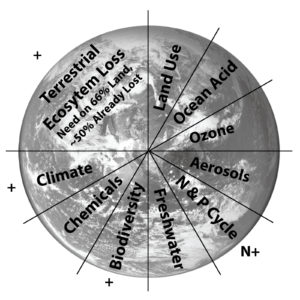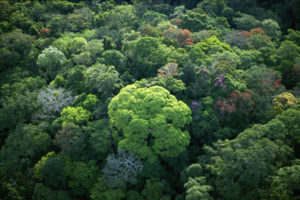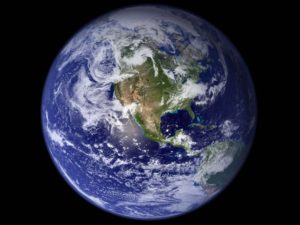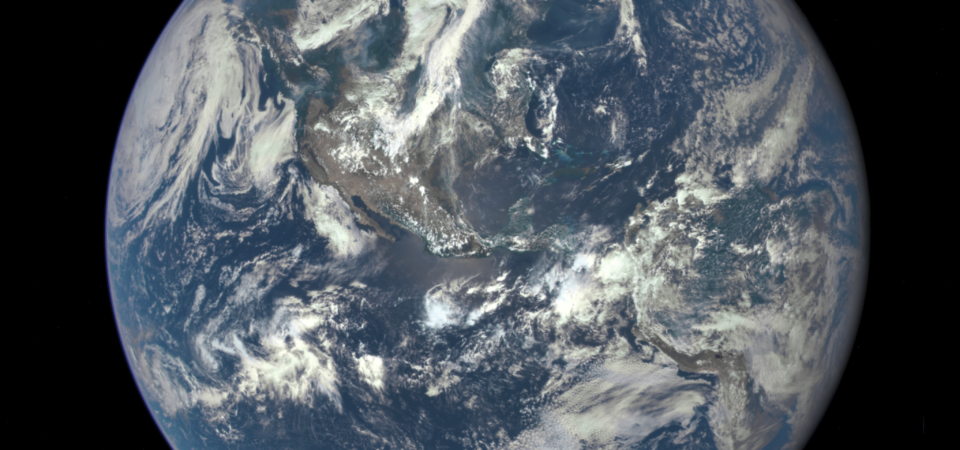This post was originally published by EcoInternet. The original piece can be found here.
As industrial human growth continues its relentless assault upon nature, at least nine unfolding global ecological catastrophes in addition to deadly climate change have the potential to destroy the biosphere. Any number of other environmental planetary boundaries besides climate change such as biodiversity, water, soil, and ecosystem loss and diminishment has the potential to end being. The already substantial climate change movement must embrace a richer ecology ethic, morphing into a concerted effort to more broadly achieve global ecological sustainability.
“We could solve climate change tomorrow, and soil and water loss – or any number of combinations of surpassed planetary ecological boundaries – would still destroy civilization, potentially killing the living biosphere, and ending being.” – Dr. Glen Barry in Earth Meanders, Deep Ecology Essays by Dr. Glen Barry

Human industrial growth is systematically dismantling the natural ecosystems which constitute our life support system. Rightly so, there has been an enormous amount of attention given to climate change (though action to rapidly reduce emissions still lags far beyond what is required). Climate change is becoming abrupt and runaway; and threatens just by itself to collapse societies, economies, and ultimately the biosphere.
Yet climate change is only one of at least ten global ecological catastrophes which threaten to destroy the global ecological system and portend an end to human beings, and perhaps all life. Ranging from nitrogen deposition to ocean acidification, and including such basics as soil, water, and air; virtually every ecological system upon which life depends is failing. Gaia is dying.
The threat to global ecological sustainability goes well beyond climate change, and represents a more systematic failing of current political and economic models. Namely, the commodification of natural ecosystems – that are our and all life’s habitat – and their unsustainable industrial clearance for short-term profit, is sheer ecocidal madness.
A branch of ecological science known as Planetary Boundary science knows much regarding ecological thresholds whereby Earth and her life may collapse and die. Planetary boundaries have been identified for ten global-scale processes including climate change, rate of biodiversity loss (terrestrial and marine), nitrogen and phosphorus cycles, ozone depletion, ocean acidification, freshwater, land use change, chemical pollution, and atmospheric aerosol loading (and others clearly exist). For each scientists have set thresholds beyond which the global ecological system’s integrity as a whole is threatened.
At least three thresholds – climate change, biodiversity loss, and nitrogen deposition in ecosystems – are generally considered to already have been surpassed, meaning the planet is already in a state of ecological overshoot.

Recently I proposed in a peer reviewed scientific paper a tenth Planetary Boundary, adding a threshold for terrestrial ecosystem loss: hypothesizing that 2/3 of Earth’s land base must remain ensconced within natural and semi-natural ecosystems to avoid biosphere collapse (see Terrestrial ecosystem loss and biosphere collapse). Already some 50% of natural ecosystems have been cleared, meaning yet another planetary ecological limit has been exceeded. My identification of a terrestrial ecosystem boundary was the first published science proposing a planetary boundary based upon terrestrial ecosystem loss and connectivity, and has since been validated in other studies by scientific luminaries.
The point is that while abrupt climate change may well become runaway, collapsing society, the economy, and the biosphere; it is but one of nearly a dozen means whereby humanity has overshot the carrying capacity of the Earth System. Consider this: nearly half of all topsoil has eroded, 90% of large fish are gone, 4,500 kids die from bad water a day, nearly a billion human-beings live in abject poverty, and daily an unknown numbers of species disappear forever.
Highly inequitable, unjust, and unsustainable industrial human growth is systematically dismantling the ecological systems that make Earth livable.
We could solve climate change tomorrow, and soil and water loss – or any number of combinations of surpassed planetary ecological boundaries – would still destroy civilization, potentially killing the living biosphere, and ending being.
Achieving just and equitable global ecological sustainability depends upon the human family becoming more aware of the numerous ecological threats facing our shared survival and well-being. Together we must commit to the radical, science-based social change necessary to sustain Earth and all her life. This will certainly require a shared “ecology ethic” which universally values nature – the plants, wildlife, and ecological processes that make life possible. Ecology is the meaning of life.
Clearly much more research remains to be done on Planetary Boundaries and threats to the biosphere in sum, as well as communication of dangerous thresholds, and policy development to pull back from the precipice. I hope to look further at lag times in regard to when exceeding planetary boundary’s thresholds become dangerous, and to use what is known regarding Pacific Islands’ sustainability as a test case for terrestrial ecosystem loss, and to publish further ecological science. Most importantly, much more effort must be made to act with urgency and resolve upon the science that indicates we face mortal danger.

The way forward on a potentially terminally-ill planet include 1) transitioning to a steady state economy, 2) slowing population growth and then justly reducing human numbers, 3) committing to equitably meeting all of humanity’s basic human needs, 4) ending all natural ecosystem destruction and assisting remnants to naturally regenerate and spread, 5) ending the use of fossil fuels, 6) embracing organic, non-industrial, perma-culture based agriculture less dependent upon animal husbandry, 7) ending industrial clearance of natural ecosystems such as old-growth forest logging and factory fishing, and 8) demobilizing standing armies and diverting these resources to meeting humanity’s and nature’s needs.
Only such comprehensive, ecological-science based policies can prove sufficient to end climate change and all threats to global ecological sustainability, averting mass human suffering and death as the Earth collapses and dies.
As long as seeds and organisms exist, the propagules to regenerate Earth remain. It is vital that the diminution of Earth’s biotic diversity across scales – from the gene, to plants and animals, through the communities and ecosystems they come together to form, right up to our one shared biosphere – be halted immediately. We must not further squander humanity’s biological inheritance upon the altar of frivolous over-consumption by some. And together we must usher in an era of natural ecosystem protection and restoration.
There are many righteous livelihoods – that go far beyond the benefits provided by a slave-like debt economy – to be found in rewilding and pulling humanity back from the ruin of usurping planetary boundaries. But profiteering upon the systematic ecocide of our one living Earth will have to be banished, and strictly enforced for the common good, by a much reduced government.
There is much joy to be found in nature. Rediscovering wild places and clear waters in communities embraced by nature provides for a far richer life than shopping malls and highways. As we rediscover a sense of place there are multitudes of pleasures to be found as well in human literature, music, drama, sexuality, and community. Urban centers can be reclaimed from automobiles and once again become re-natured centers of commerce, culture, and civilization.
It is time to come together and choose life over death, truth over ignorance, beauty over industry, flowers rather than electronics. It is time to return to the land and embrace nature and ecology as the meaning of life. And to address with sufficient policies climate change and all threats to global ecological sustainability at once. Or being ends.
This post was originally published by EcoInternet. The original piece can be found here.
The MAHB Blog is a venture of the Millennium Alliance for Humanity and the Biosphere. Questions should be directed to joan@mahbonline.org
MAHB Blog: https://mahb.stanford.edu/blog/end-being-boundaries/
The views and opinions expressed through the MAHB Website are those of the contributing authors and do not necessarily reflect an official position of the MAHB. The MAHB aims to share a range of perspectives and welcomes the discussions that they prompt.
